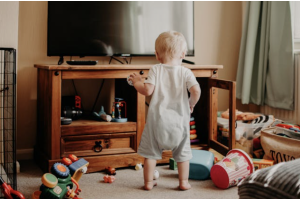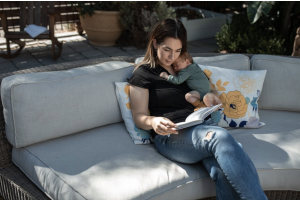Creative Routines That Keep Children Curious and Engaged

Engaging children’s curiosity often requires intentionality in how activities are structured. In a world filled with distractions, nurturing a child’s wonder becomes more important than ever. Providing opportunities for exploration and creativity can be the foundation for lifelong learning and emotional resilience. Children thrive in environments where they can ask questions, experiment, and express themselves through various mediums. The ability to maintain an atmosphere that sparks curiosity is beneficial for cognitive development and good for emotional growth.
Creating a Stimulating Environment
Creating spaces that encourage curiosity and creative thinking can significantly influence a child’s learning experience. Furniture arrangements, decor, and available resources all play a role in shaping an engaging atmosphere. Artwork made by children, colorful items, and dedicated corners for various activities foster a sense of ownership and excitement in learning. Parents and educators can imbue these spaces with the natural world, incorporating elements like plants and light to entice exploration. Children who have access to inspiring environments typically display heightened levels of engagement. A stimulating atmosphere can inspire various activities, from hands-on projects to independent exploration of books or technologies. Ideally, spaces should be versatile, accommodating different types of play or inquiry.
Encouraging Hands-On Learning
Children often learn best through hands-on experiences that allow them to manipulate materials and engage directly with the subject. A creative workspace should include a variety of stimulating resources. Craft supplies, science kits, and building materials enable young minds to experiment and innovate. Projects that involve building, crafting, or creating can ignite excitement for learning while challenging children to think critically. With hands-on learning, the possibilities are endless. Projects could range from simple art creations to more complex engineering challenges. Encouraging collaboration among peers in group projects can add layers to the learning experience, where discussions spark new ideas and perspectives. Children learn by doing and gain social skills through cooperation and teamwork.
Incorporating Nature and the Outdoors
Nature has an incredible capacity to inspire curiosity. Outdoor activities stimulate a child’s imagination and creativity like no other environment can. Exploring the natural world opens avenues for discovering a host of experiences that learning indoors may not provide. Fields, parks, or backyards can transform into living laboratories brimming with exploration opportunities. Gardening is a particularly engaging way to intertwine creativity with environmental education. It teaches responsibility and nurtures an appreciation for the ecosystem. Children can learn about plant life cycles, insects, and the weather while enjoying fresh air. Creating outdoor spaces like Sustainable Cubby Houses allows for imaginative play and embodies hands-on learning with real-life applications. Engaging with nature instills values of sustainability from a young age, establishing a lifelong connection with the environment.
Utilizing Technology Wisely
While balancing screen time is important, incorporating technology can enhance creativity when used intentionally. Educational apps, games, and online resources can bring subjects to life, providing interactive learning experiences. Children can explore coding, digital art, or music composition, unlocking various creative paths. Technology, when used as a tool for expression, nurtures skills that are increasingly important in our changing world. Experiments with robotics, virtual reality exploration, or participation in online creative communities can expand a child’s creative landscape beyond their immediate surroundings. Encouraging kids to document their creative journeys online through blogs or social media can build confidence and connect them with like-minded peers.
Fostering curiosity through creative routines doesn't require elaborate setups—just intentional actions that open doors to discovery. When children are given the freedom to explore, question, and express themselves, they develop a deeper connection to learning. With thoughtfully designed spaces, meaningful experiences in nature, and the right use of technology, children's creativity can flourish and stay alive well into adulthood.






